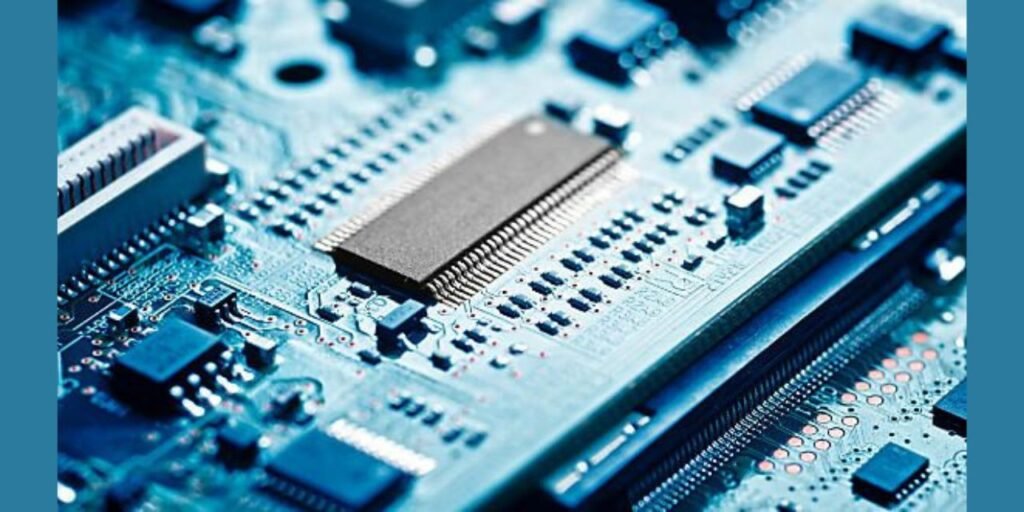
The growing need for power efficiency and optimisation across a range of industries, including consumer electronics, automotive, telecommunications, and industrial sectors, is driving the fast expansion of the Power Management Integrated Circuit (PMIC) Market. PMICs have become crucial parts that offer effective power regulation, distribution, and management in electronic devices as energy needs continue to rise in line with technological improvements. According to forecasts, the PMIC market is predicted to rise steadily, with growing expenditures in renewable energy, regulatory pressures, and technical improvements all contributing to a major expansion in worldwide demand by 2031.
Important Factors Affecting the PMIC Market
1.Growing Demand for Energy Efficiency in Electronics
As the world becomes more energy-conscious, industries and consumers alike are seeking devices that minimize power consumption without compromising performance. PMICs have become instrumental in enhancing the energy efficiency of a wide array of devices, from smartphones and tablets to automotive systems and industrial equipment. Their ability to provide precise control over voltage regulation, energy distribution, and battery management makes them ideal for applications that demand consistent performance with minimal energy wastage.
2.Growing Uptake of Electric Cars (EVs)
Because PMICs are essential to controlling power distribution in EV batteries—which need to use energy efficiently for optimal performance and range—the trend towards electric cars has resulted in a significant increase in demand for them. For EV battery systems, PMICs regulate and control temperature regulation, battery charging, and safety features. The automotive PMIC market is anticipated to grow steadily as a result of automakers’ significant investments in EV technology. Furthermore, as autonomous driving technology develops, more PMICs will probably be needed for sensors, in-car entertainment systems, and advanced driver-assistance systems (ADAS), which will fuel market expansion even more.
3.Development of IoT and 5G Infrastructure
The need for PMICs that handle sophisticated, high-performance network equipment and battery-dependent Internet of Things (IoT) devices has increased due to the growth of 5G networks and IoT devices. For these devices to function dependably and effectively, power management solutions are necessary, especially since they are being incorporated into a variety of applications including telecommunication networks, smart homes, and industrial automation. In IoT devices, PMICs allow for reduced power consumption and longer battery life, which is essential for distant applications and devices that function in energy-constrained settings.
4.Semiconductor Technology Developments
Advanced PMICs that offer improved capability in a smaller package have been made possible by the ongoing advancements in semiconductor technology. In order to simplify circuit design, minimise the total number of components, and save production costs, semiconductor manufacturers are concentrating on combining many functions—such as voltage control, battery management, and power conversion—into a single PMIC. These enhancements enable the adoption of PMICs in a greater range of applications by increasing their cost-effectiveness and versatility.
Important Market Sectors
Based on product type, application, and geography, the PMIC market is divided into many segments, all of which are anticipated to make a substantial contribution to overall growth by 2031.
By Product Type: Motor control ICs, LED lighting drivers, battery management ICs, and voltage regulators are important categories. A significant portion is held by voltage regulators and battery management integrated circuits, particularly as the market for portable electronics and electric cars keeps expanding.
By Application: Consumer electronics, automotive, industrial, and telecommunications are among the main application areas. Due to the wide range of PMIC applications in wearables, tablets, and smartphones, the consumer electronics sector has long had a dominant market share. However, because of the quick uptake of electric and driverless cars, the automotive industry is becoming a high-growth sector.
By Region: The PMIC market is expected to grow in North America, Europe, Asia Pacific, and Latin America. Due to the existence of significant consumer electronics and automobile manufacturers in nations like China, Japan, and South Korea, Asia Pacific is anticipated to lead the market. Due to technical advancements and a strong emphasis on energy-efficient solutions, North America and Europe are also significant markets.
Technological Developments Affecting PMICs’ Future
- Machine Learning Integration for Intelligent Power Management
Predictive power management is made possible by the increasing integration of AI and machine learning into PMIC designs. Through this connection, PMICs may optimise energy utilisation across a range of applications by anticipating power demands based on user habits and ambient variables. - Emphasis on Silicon Carbide (SiC) and Gallium Nitride (GaN) in PMICs
Because GaN and SiC materials perform better than conventional silicon-based devices, they are becoming more popular in PMIC design. These materials offer high power density, reduced switching losses, and improved thermal conductivity, making them ideal for high-power applications like EVs, industrial motors, and fast-charging systems.
- Energy Harvesting and Wireless Power
Technologies like energy harvesting and wireless power transmission are expected to change the PMIC scene, especially in Internet of Things applications. Self-sustaining IoT devices can be made possible by PMICs that effectively manage wireless power or energy collected from ambient sources (such as solar or kinetic energy), which lessens the need for batteries and lowers maintenance costs in remote installations. - Enhanced Thermal Management and Miniaturisation
PMICs are being engineered to fit into smaller places without sacrificing power handling capacity in response to the trend towards miniaturisation. In order to manage the increased power densities, improved thermal management techniques are being implemented, enabling PMICs to function effectively even in small and thermally limited spaces.
Opportunities and Difficulties
Complex design specifications and the necessity to adhere to various regulatory standards across various countries and applications are some of the difficulties facing the PMIC industry. Disruptions to the supply chain can endanger cost control and production continuity, particularly in the semiconductor sector. PMIC designs that are more robust and flexible in response to changing operating circumstances can be developed as a result of these difficulties.
Moreover, as renewable energy adoption increases globally, PMICs tailored for solar and wind power applications are expected to rise in demand, creating new growth avenues. Collaborations among semiconductor companies, device manufacturers, and energy providers are likely to accelerate innovations in PMICs for green energy applications.
